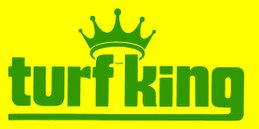
The sudden appearance of "foamy" patches of slime mold on lawns or wood mulch can be disconcerting. Slime molds are colorful organisms that usually appear in warm, muggy weather after a rain. They can be white, purple, gray, orange, yellow, or brown in color.
Slime molds first develop as a yellow or orange slimy mass and can ooze over areas 12 inches or more in width. To some people, the patches look like vomit from a dog or other animal.
As the weather becomes dry, most slime molds develop into crusty structures that are typically filled with dark spores.
Slime molds can be found lawns and the lower leaves of other low-lying plants as well as on mulch.
Slime molds use plants, wood mulch and other organic materials as a surface to support their spore-producing reproductive structures. They feed on dead organic matter and on bacteria and fungi found in the soil.
Slime molds do not infect plants. They are not plant parasites, but they may injure plants by covering and shading them thus reducing the amount of sunlight that reaches the leaves.
Control of slime molds generally is unnecessary. Slime molds are more of a curiosity than a problem. They will disappear if left to complete their life cycle. If their appearance is bothersome, they can be broken up with a rake, a mower, or a strong stream of water. To remove it from plants, simply wash or prune them. If management is required for cosmetic reasons, decrease irrigation to reduce slime mold incidence.
Slime molds are fungus-like organisms that have previously been classified as fungi, and later as Myxomycetes. They are no longer classified as fungi. Depending on the sources, there are now two or three different groups of slime molds, one of which is the myxomycetes. These now fall under the broader category of eukarya.
Slime molds first develop as a yellow or orange slimy mass and can ooze over areas 12 inches or more in width. To some people, the patches look like vomit from a dog or other animal.
As the weather becomes dry, most slime molds develop into crusty structures that are typically filled with dark spores.
Slime molds can be found lawns and the lower leaves of other low-lying plants as well as on mulch.
Slime molds use plants, wood mulch and other organic materials as a surface to support their spore-producing reproductive structures. They feed on dead organic matter and on bacteria and fungi found in the soil.
Slime molds do not infect plants. They are not plant parasites, but they may injure plants by covering and shading them thus reducing the amount of sunlight that reaches the leaves.
Control of slime molds generally is unnecessary. Slime molds are more of a curiosity than a problem. They will disappear if left to complete their life cycle. If their appearance is bothersome, they can be broken up with a rake, a mower, or a strong stream of water. To remove it from plants, simply wash or prune them. If management is required for cosmetic reasons, decrease irrigation to reduce slime mold incidence.
Slime molds are fungus-like organisms that have previously been classified as fungi, and later as Myxomycetes. They are no longer classified as fungi. Depending on the sources, there are now two or three different groups of slime molds, one of which is the myxomycetes. These now fall under the broader category of eukarya.
If you
have a lawn/tree/shrub that needs some Tender Loving Care- get The KING OF
GREEN:
Turf King Home
Click here to Request a Quote Online -
or call us at 905.318.6677 or 1.888.TURFKING (887.3546)
If you would like more information, please Contact us
Follow us on Twitter http://twitter.com/turfkingofgreen
Join our Facebook page
http://www.bit.ly/FacebookTK
Turf King Home
Click here to Request a Quote Online -
or call us at 905.318.6677 or 1.888.TURFKING (887.3546)
If you would like more information, please Contact us
Follow us on Twitter http://twitter.com/turfkingofgreen
Join our Facebook page
http://www.bit.ly/FacebookTK
Copyright 2009
Turf King-Hamilton. All Rights Reserved.




2 comments:
Is this mold dangerous to dogs? I have discovered a few small patches in my back yard. I notice they start out white/yellowish and I thought my dogs were vomiting. Then they turn black and powdery. Are these spore dangerous for animals or humans to breathe?
No slime mold is not dangerous to humans or dogs.
Post a Comment